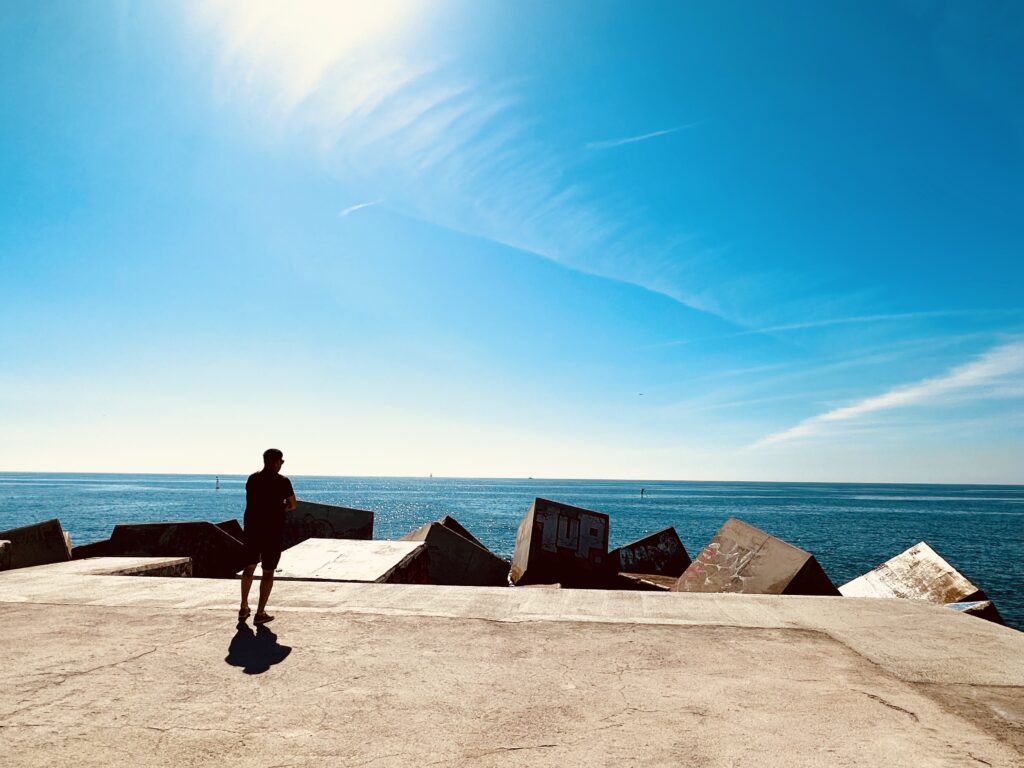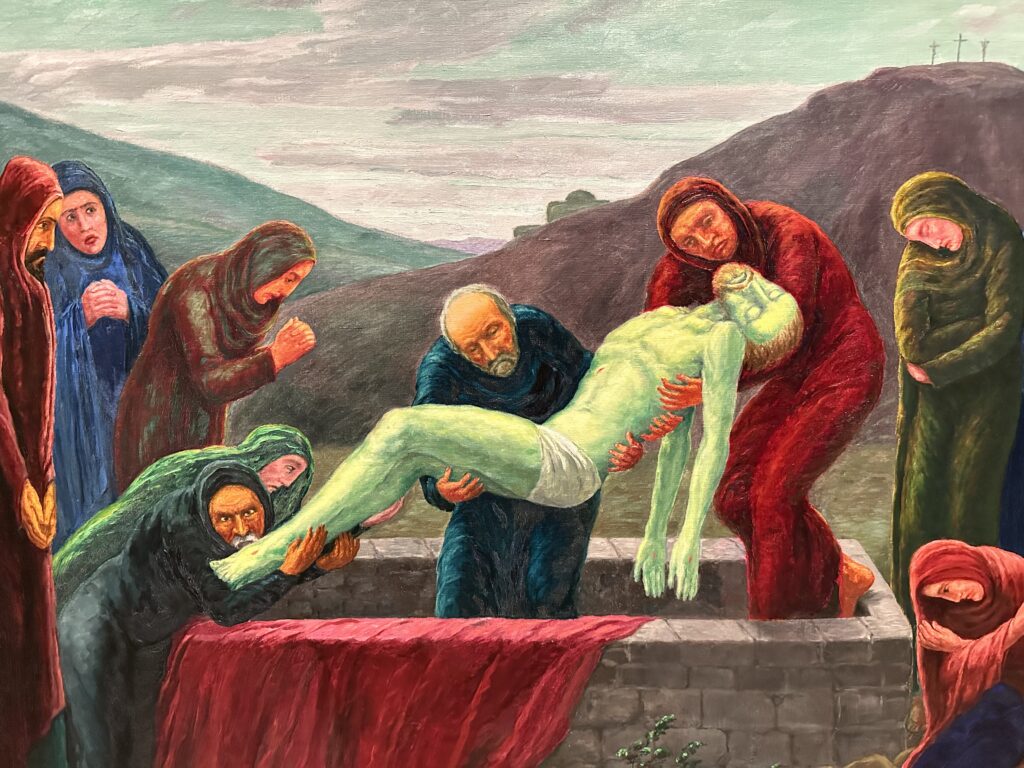
At home, I’m a creature of habit. Walking the same paths, touching the same concrete post, or visiting the same river duck soothes me. I know the duck will be there paddling in the green waters of the Douro. I know the feel of the rough concrete as my fingers brush the top of the post before I turn home, the sound of the trains rumbling across the bridge, and the tinny music drifting up from a small café. I am also alone with my breath and thoughts and can take as much time as I like to stare at an odd-looking pigeon, flower, or complicated pile of garbage. I can then return to a shower and lunch and feel satisfied and relaxed.

When I travel, all such habit is cast aside except for one. I stick to one destination a day, a museum or cathedral, with a loose idea of lunch or a glass of wine somewhere. I don’t enjoy a rigid, timed structure to my day and resist excess scheduling or anyone expecting me to be the tour guide because I don’t want the weight of their unearned disappointment. I’d rather just handle my own dissatisfaction than be the recipient of someone else’s because the world isn’t always amusing, and sometimes lunch will suck.
In Barcelona, my in-laws announced they would do whatever we wanted for the day with the dreaded words, “You’re our tour guide!” After the dense crowds of the Gothic Quarter and Sagrada Familia, I suggested a break and stroll to the beach would be nice, followed by a visit to a museum. We wandered past shops and through residential neighborhoods, stopping at one display window where two women made dim sum to tempt future diners. It felt voyeuristic to see them rolling dumplings for our amusement. Still, they smiled at us, and we did return later for dinner, so the human dumpling display worked as an advertisement.

At the beach, we crested a small dune and looked at the beautiful blue-green Mediterranean Sea. Broad paths for cycling and walking stretched for miles in either direction, and cyclists hauled past, almost taking one of my husband’s parents out, who did not note the difference between the sidewalk and the bicycle path. As we climbed the brief, sandy path up the dune, we saw a shuttered restaurant and concrete pier with large, square manmade boulders to fight erosion piled around it. And directly below us, on a shielded stretch of sand, naked, oiled men lay spread-eagle, sunning their balls. “Oh,” I said. This wasn’t part of the tour I had planned for the in-laws. We averted our eyes rather than gawk at their taints and then saw the sign announcing the nude area of the beach. After descending the dune viewing area, conspicuously settled by single men hunkering watching the sunbathers, we walked out on the pier to get a closer view of the water.

Walking back, we headed for an interesting museum near our hotel. All major tourist cities always possess a remarkable historic art museum, and usually, some more minor, shameless attempts to draw tourist dollars like a museum of erotica, wax figures, or instruments of torture. At various times in the past, I confess I am not so cool or worldly that I have never said, “Let’s go look at old dildos or collections of bizarre things used to rip people apart.” Tourists often neglect The Can Framis Museum though because it is not close to the other significant sites they find appealing and doesn’t have the historical flash or macabre selling points. It features the modern works of Catalan artists in a repurposed textile factory in the Poblenou neighborhood. The old factory is almost guaranteed to be pleasantly uncrowded. The entrance fee is not exorbitant; there will be zero influencers with selfie sticks. Instead, you will find a blissful chilly peace of expansive rooms, natural light, bursts of color, and sculptures.

The spiritual experience that so many of the more modern, crowded museums lack is the opportunity to be alone in a beautiful place with art. I’ve never found anything but stress in dense crowds, which is probably why you won’t see me at a music festival in a mucky cow pasture, either. We strolled through the concrete spaces and viewed the abstracts and sculptures in silence, with no flag-waving tour guides reciting their histories in sight.
Not all art is spiritually transformative, but I’ve always found a good museum far more inspiring than any cathedral. Maybe it is because the cathedrals were constructed on lies and indulgences, corruption and greed, and the world’s great museums may have traces of all these foibles but are more focused on human capability and creativity than mythical creatures and ordinary people telling us how to behave. Some displays in any museum are crap, confusing, culturally significant but dull and on the nose, or simply derivative. Still, there will always be something to marvel at, something that revisits you again and again in memory for years.

After viewing the primary collection, we stopped at a special temporary exhibit called Bad Painting? displaying awkward nudes, a sickly green Jesus with a man going nom, nom, nom on his foot, and sullen cats harassing fish in a bowl. I found the exhibit delightful, and the fact we had it entirely to ourselves was a relief. Whatever habit I can cultivate in a foreign city, whatever peace I can find, it will almost always be in silence and isolation and usually associated with either art (however bad) or natural spaces. There is something so wonderful about escaping crowded venues and finding your own space to breathe.



If you want a break from crowds in Barcelona, visit the Can Framis Museum or wander along the sea near the Poblenou district. Sun your taint if you must at the nudist beach even though doctors advise against UV rays for the delicate skin there. I don’t want to know what years of sun damage can do to a scrotum. I’ve already seen what it did to my decolletage. No matter where you choose to go, adding a quiet day to your experience is always a good idea.

- Only one general tip, find a way to get away from people and also see a city. It can be done and is so very necessary to have quiet memories to add to your experience.
